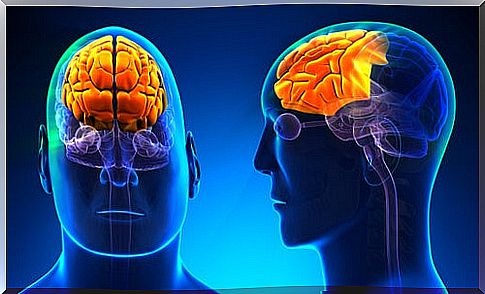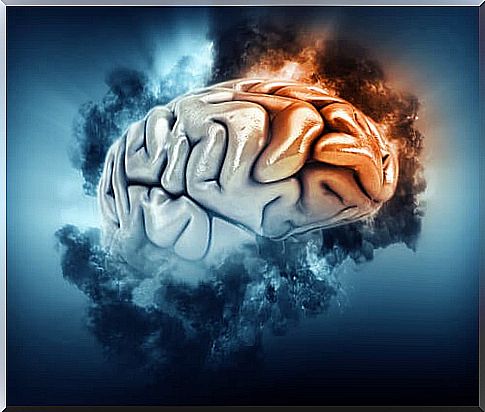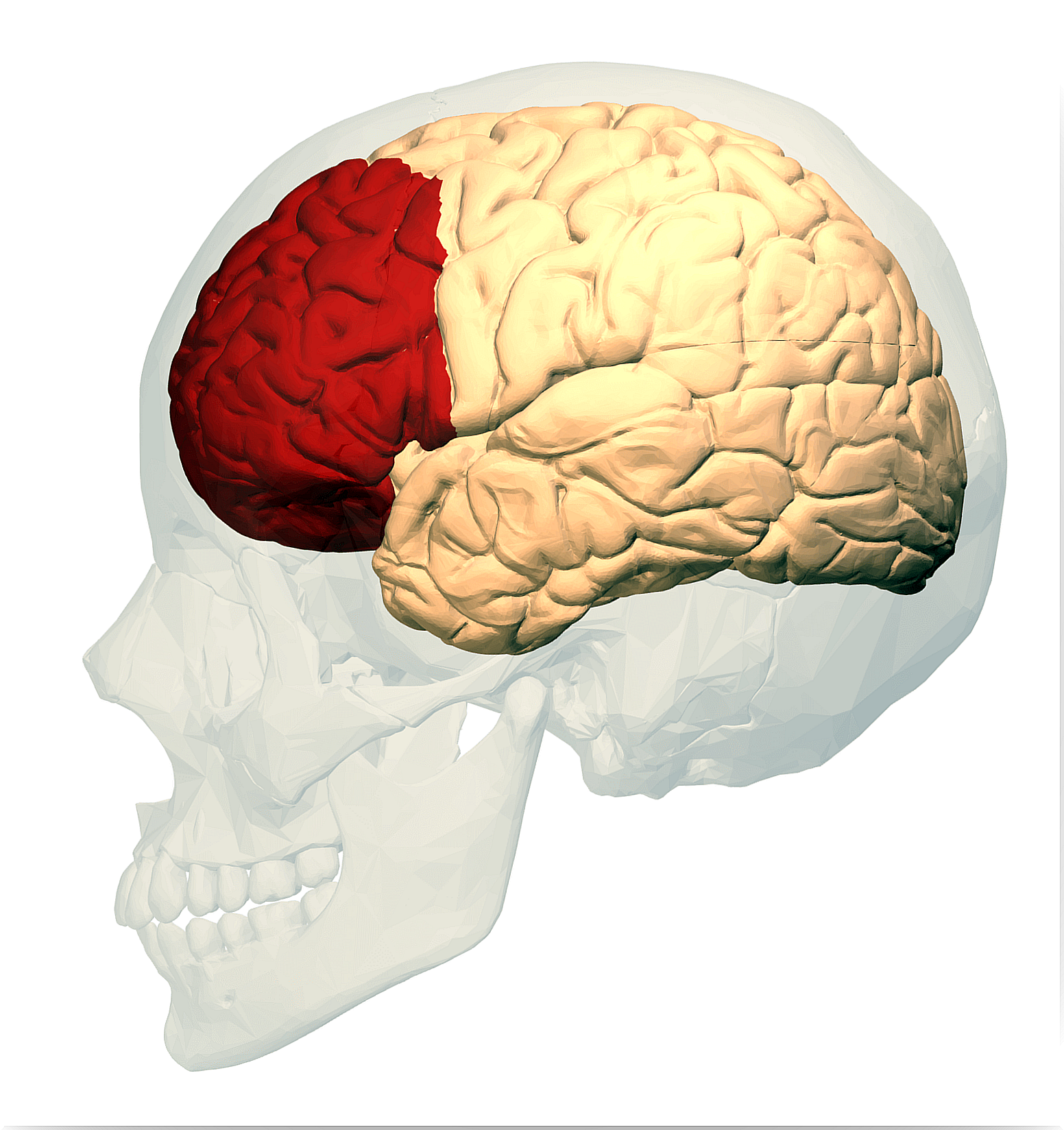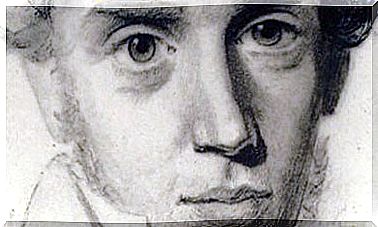What Is The Frontal Lobe?

The nervous system (SN) is a network of neurons and glial cells of enormous complexity that will ultimately determine our behaviors, thoughts and emotions. These nervous units, in order to fulfill their function, will be grouped into larger structures; and each of these groups will contribute their grain of sand to this complex machinery. One of the most notable structures of the SN is the brain, which is divided into a series of substructures called lobes; among them the frontal lobe, which will be the protagonist of this article.
First of all, it must be understood that the lobes are defined from a division of the cerebral cortex. A division that is made based on the role they play in the different processes and their location. So if the brain were the earth, the lobes would be something like the continents.
This classification is very functional, since it serves as a map to easily locate certain points throughout the brain. The cerebral cortex is composed of 6 functional lobes: frontal, parietal, occipital, temporal, insula, and limbic. In this article we are going to focus on possibly the most relevant of them, the frontal lobe. We will start by highlighting the area it occupies, since its is a third of our cerebral cortex.
Structure and functions of the frontal lobe
The frontal lobe is located in the most anterior part of the brain, specifically the entire cerebral cortex starting from the central sulcus. It is considered a very important lobe because it fulfills central functions in information processing, especially relevant are those that have an executive nature. Now, the frontal lobe is divided into multiple regions that provide it with a great variety of functions.

When it comes to grouping the different functional structures of the lobe, we can speak of two large territories. One of them would be the territory corresponding to the motor cortex, which would fulfill motor functions. The other territory would be the prefrontal cortex, the one in charge of executive processes, decision-making and different aspects related to the regulation of emotions.
Arendo, Bembibre and Triviño (2012) highlight the importance of the frontal lobe, stating that it is connected to practically all areas of the brain. The authors report that this area processes “information of a cognitive, motivational and emotional nature and uses it to drive the individual’s behavior to achieve their goals . ” Thus, thanks to the frontal lobe, we are able to design plans, select them and coordinate the best cognitive strategies to carry them out.
Motor cortex
The motor cortex of the frontal lobe is the manager of the body’s effector systems. Thanks to him, we will be able to carry out all kinds of voluntary motor acts. This structure will be in charge of both planning the movement and transmitting the orders to the muscles to get them going. It is important to clarify that this cortex is only responsible for voluntary movements, the involuntary motor system is present in other structures, such as the basal ganglia and the cerebellum.
We can find three areas of relevant mention within the motor cortex:
- The premotor area. She is in charge of planning and scheduling movements. Before carrying out any movement, these neurons are in charge of establishing the muscles and steps necessary for it to be resolved correctly.
- The primary motor area. It is the cortex that is responsible for executing the scripts prepared by the premotor cortex. That is, it is in charge of triggering the movement action, sending the orders to the muscles.
- Broca’s area. It is responsible for the production of language. Its function is to coordinate the phonological muscles so that the subject can speak and pronounce. It is also involved in the production of writing. To learn more about her, click on the following link.
Prefrontal cortex
In this region we find the executive system and the information processor of the human brain. The frontal lobe prefrontal cortex is ultimately responsible for cognition, behavior, and emotional response of subjects. It is the mediator between many other structures throughout the brain, taking its key role in decision-making.

It is worth clarifying that executive functions are a set of higher order cognitive abilities, which control our behavior and emotions. That is, all those processes that are responsible for managing, organizing, coordinating and directing; it could be described as the processor of a computer following a computational metaphor.
Three major regions of the prefrontal cortex
- The dorsolateral frontal cortex (CPDL). It is connected with regions of other lobes and transforms thought into plans, behaviors and decisions. CPDL is closely related to higher psychological processes such as working memory, metacognition, attentional control, cognitive flexibility, etc. Burguess (2012) lists the main functions of this area: attention, memory (working and declarative), language, and preparation and temporal sequencing.
- The cingulate area. Its function is highly related to the regulation of motivational processes. It is responsible for inhibiting or inciting the individual to action. It is also in charge of certain processes related to the regulation and maintenance of care.
- The orbitofrontal cortex. It fulfills the mission of controlling affectivity and social behavior. It intervenes in the processing and regulation of emotions and affective states, adapting behavior depending on the context. Receive information from all sensory modalities. As Arnedo, Bebibre and Triviño (2012) highlight, lesions in this area can affect smell (anosmia).
The frontal lobe is one of the most relevant structures within our brain. Its study through the various neuroscientific techniques provides us with very valuable information: understanding its structure and functionality brings us closer to understanding our biology and gives us clues about its relationship with our behaviors, emotions and thoughts.








